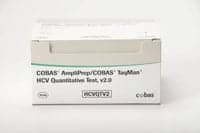Roche, Basel, Switzerland, with US headquarters in Indianapolis, has received FDA approval for its COBAS AmpliPrep/COBAS TaqMan HCV Test, v2.0, a next-generation viral load test to be used in the management of patients with chronic hepatitis C virus (HCV) infection in conjunction with clinical and laboratory markers of infection.
The test provides a dual-probe approach, for an extra layer of protection in detecting and quantifying
the virus.

“The rapidly changing hepatitis C treatment landscape requires tests with an additional layer of protection in detecting and accurately quantifying hepatitis C RNA across genotypes,” says Roland Diggelmann, COO, Roche’s Diagnostics Division. “This test can play a valuable role in response-guided therapy, helping physicians and patients better manage the disease and optimise treatment choices and
duration.”
The test is a nucleic acid amplification test for the quantitation of hepatitis C virus RNA genotypes 1 to 6 in human EDTA 2/3 plasma or serum. It can be used to predict the probability of sustained virologic response early during a course of antiviral therapy and to assess viral response to antiviral treatment (response-guided therapy), as measured by changes of HCV RNA levels.
The test is designed for use on the company’s fully automated COBAS AmpliPrep/COBAS TaqMan System. The system can be combined with the cobas p 630 instrument, which provides an integrated preanalytical primary tube handling solution.
According to the Centers for Disease Control and Prevention, in the United States there are about 5 million people living with hepatitis C. The disease can ultimately result in cirrhosis, liver failure and hepatocellular
carcinoma, which together are responsible for hundreds of thousands of deaths each year.
[Source: Roche]


